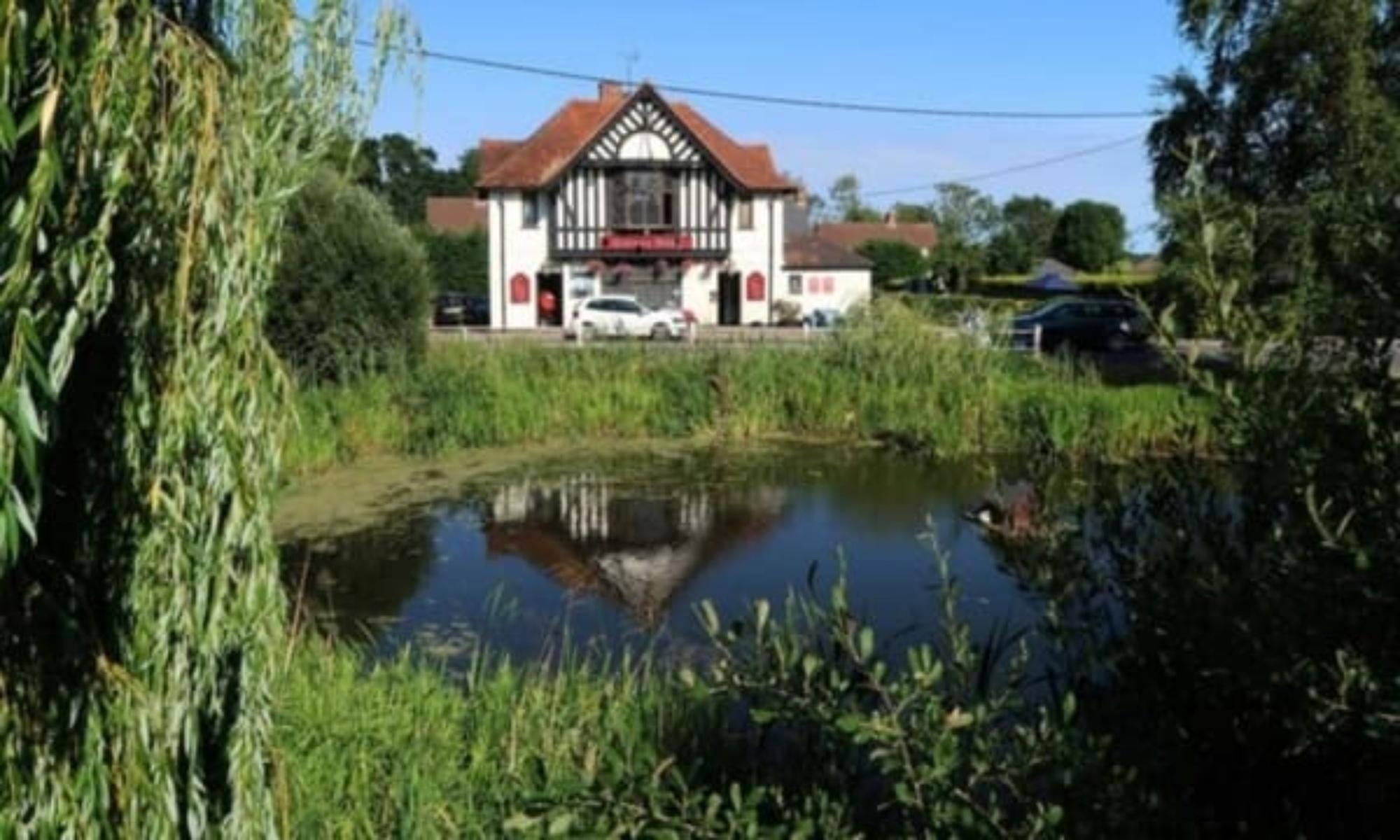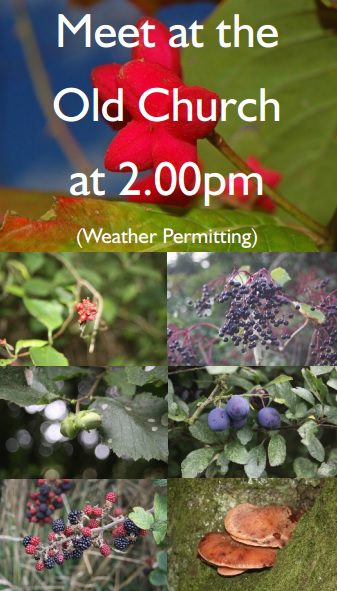Autumn Walk – Fungi, Berries & Fruits

Steve Hallam will lead a guided walk to seek out berries, soft fruit, nuts, seeds & fungi. All of these are now out in abundance. To join Steve you should meet him at the Old Church at 10 am on Saturday 20th October -wear suitable clothing! You should wear strong boots or wellies as we may encounter long wet grass!
Steve will explain the folklore about the finds, which ones should not be eaten – and what will happen to you if you do!
A relatively small number of the roughly 2,000 varieties of wild British mushroom can be safely eaten; it is essential to take care. Just as there’s nothing quite like a freshly made risotto ai funghi, so there is nothing quite like discovering your hair falling out over the tutti-frutti. Although few wild mushrooms will actually kill you, the hazards can range from an extreme laxative effect to kidney failure.
William Langley – Daily Telegraph
What will you see?
You should expect to see around 20 types of berries, fruits and nuts. The walk will take in Hillhouse Wood and surrounding hedgerows, and will thus be a little longer than normal. The following report was from Steve’s last Autumn walk in 2016:
Autumn Fruits Walk – Steve Hallam
On the 16th October I ran the fourth Autumn Fruits nature walk around and through Hillhouse Wood. The fact that I am able to make this statement is a slight surprise because the previous evening’s weather forecast had heavy rain bang on the time of the walk, and light rain for an hour either side. On which basis I had anticipated being on my own. Accordingly, I was quite pleased to hear heavy rain falling when I woke up, suggesting that it was moving through earlier than forecast. And so, by around 9.45 the rain was becoming showery and the clouds were lightening. But would everyone have been put off? As it turned out the answer was ‘no’ with nine hardy souls arriving at the church. Naturally, as this was the first year I forgot to bring any sweets, two of them were young children. Typical!
Keeping interest levels up
This year, unlike in 2015, I had ample time to survey the route and knew there was plenty to see. But, as a result, this would make it a relatively long walk (about two hours) and I wasn’t sure how long the youngsters’ interest would last. As I’ve commented on before, it has been a surprise to discover how the presence, location and abundance of plants vary from year to year. So each year there are pleasant surprises with the occasional disappointment. This year’s disappointments were an absence of Black nightshade, virtually no Dogwood berries or Sloes, a reduced variety of flowers, and the fact that the crop of our one Plumtree had already finished.
Happier Side
On the happier side of the coin, this year we had another great display of wild hops, a relatively large number of Holly berries, good displays of both Black and White bryony (no relation) and a pretty flower that I’ve not previously seen – Creeping cinquefoil; a flower that is easy to mistake for a Buttercup.
side of the coin, this year we had another great display of wild hops, a relatively large number of Holly berries, good displays of both Black and White bryony (no relation) and a pretty flower that I’ve not previously seen – Creeping cinquefoil; a flower that is easy to mistake for a Buttercup.
Fairies
And so to my two mini-walkers, Abigail and James. It turned out that they each had a fairy – Abigail’s was called Rosehip and James’s was called Blueberry. They were keen to see the real-life berries that their fairies were named after. We would see both, but my challenge was to maintain their interest at a high enough level to keep them in the group until we got there. Luckily for me, we came across Rosehips fairly quickly, which pleased Abigail and made James keen to find ‘his’ berry.
Even without the incentive of sweet rewards they were both happy playing the ‘Hip or Haw’ challenge. This kept them going until I managed to find some Sloes – as close as you can get to a Blueberry in north-east Essex. In the end, they got nearly half way round before James’s little legs reached their limit and their Mum took them home. I thought they both did very well.



